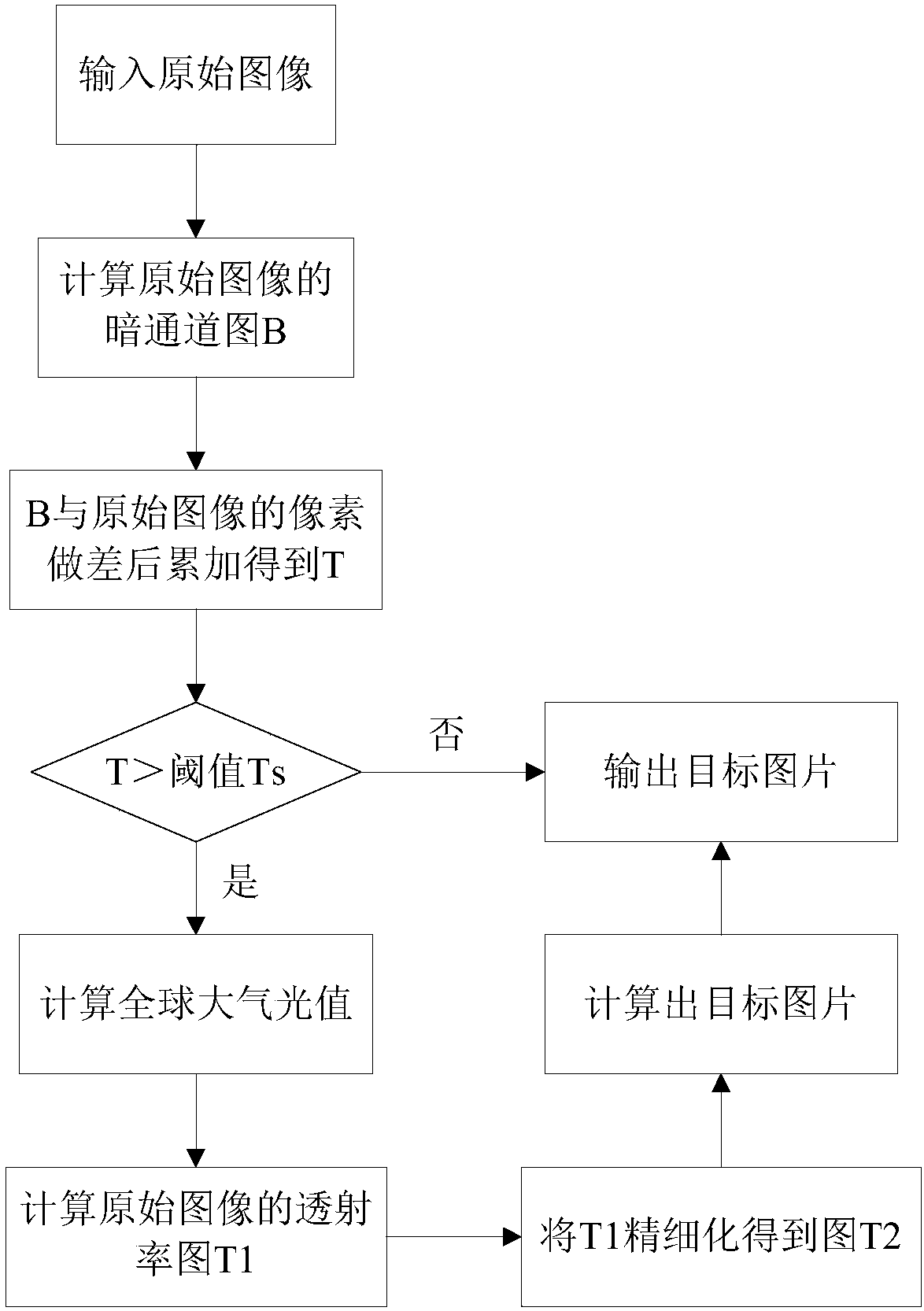Image dehazing method
An image and original image technology, applied in the field of image processing, can solve the problems of high processing time requirements, large storage resources and computing resources, long processing time, etc., and achieve the effects of shortening processing time, high bandwidth, and low delay
- Summary
- Abstract
- Description
- Claims
- Application Information
AI Technical Summary
Problems solved by technology
Method used
Image
Examples
Embodiment 1
[0022] In this embodiment, there are electronic eyes, MEC (Mobile Edge Computing) server, remote server and terminal. The electronic eye detects whether the original image is defogged, and then sends the original image and detection results to the MEC server. If there is no need to defog, the MEC server directly sends the original image to the remote server for storage, otherwise the MEC server performs defogging processing on the original image, and then sends the processed image to the remote server for storage.
[0023] like figure 1 The method for image defogging of the present invention shown, the steps include:
[0024] A. Defog detection: Obtain the dark channel map D of the original image taken by the electronic eye, the steps are: take the minimum component value of each pixel RGB component of the original image in the electronic eye, and store it in a same size as the original image In the grayscale image, the grayscale image is then divided into multiple windows o...
Embodiment 2
[0031] In this embodiment, there are electronic eyes, MEC (Mobile Edge Computing) server, remote server and terminal. The electronic eye only captures images, and then sends the captured original images to the MEC server, where the MEC server detects whether to defog or not. If there is no need to defog, the MEC server directly sends the original image to the remote server for storage, otherwise the MEC server performs defogging processing on the original image, and then sends the processed image to the remote server for storage. Steps include:
[0032] A. Defog detection: Obtain the dark channel image D of the original image taken by the electronic eye. The steps are: after the original image is taken by the electronic eye, the original image is sent to the MEC server. Take the minimum component value of each pixel RGB component of the original image in the MEC server, store it in a grayscale image of the same size as the original image, and then divide the grayscale image i...
Embodiment 3
[0039] In this embodiment, there are electronic eyes, a remote server and a terminal. After the electronic eye captures the image, it directly detects whether the original image is defogged in the electronic eye. If there is no need to defog, the electronic eye will send the original image to the remote server for storage, otherwise, after the electronic eye performs defogging processing, the processed image will be sent to the remote server for storage. Steps include:
[0040] A. Defog detection: Obtain the dark channel map D of the original image taken by the electronic eye, the steps are: after the electronic eye has taken the original image, take out the minimum component value of each pixel RGB component of the original image in the electronic eye, and store it into a grayscale image of the same size as the original image, and then divide the grayscale image into multiple windows with pixels of 15×15, and perform minimum value filtering on each of the windows, using the ...
PUM
 Login to View More
Login to View More Abstract
Description
Claims
Application Information
 Login to View More
Login to View More - R&D
- Intellectual Property
- Life Sciences
- Materials
- Tech Scout
- Unparalleled Data Quality
- Higher Quality Content
- 60% Fewer Hallucinations
Browse by: Latest US Patents, China's latest patents, Technical Efficacy Thesaurus, Application Domain, Technology Topic, Popular Technical Reports.
© 2025 PatSnap. All rights reserved.Legal|Privacy policy|Modern Slavery Act Transparency Statement|Sitemap|About US| Contact US: help@patsnap.com

